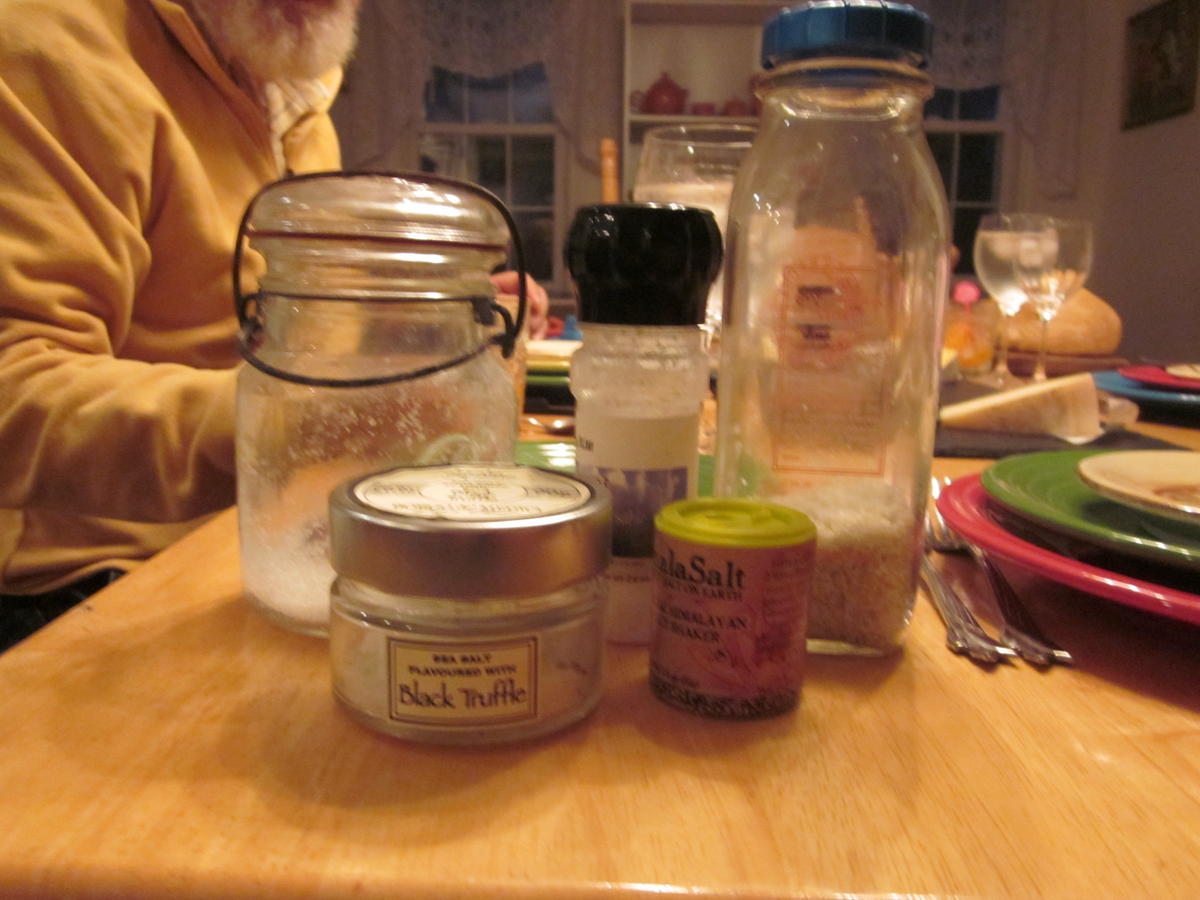
A few years ago, "artisanal salt" became all the rage. I even worked with a guy who had a sideline selling "gourmet salts" as the Next Big Thing. Fortunately Max had sense enough not to quit his day job.
There is indeed some variability in salts. Strictly in the Interest of Science, we decided to try a few:
- Unrefined Sea Salt from Brittany - coarse, most marine, I got a pound of this at Formaggio Kitchen many years ago.
- Quoddy Mist Refined Sea Salt from the Bay of Fundy - finer, milder
- Portuguese Flor de Sel - my favorite on a tomato, website now defunct :(
- Borgo de Medici Black Truffle Salt - neat idea, but no discernible effect
- HimalaSalt Himalayan Pink Salt - very fine, hard to compare flavor
- Morton's Iodized Salt - used as a control
It was interesting. We sampled them plain and on garden-fresh tomatoes. That was a good idea, because naked salt on the tongue is too strong a flavor to appreciate any nuance. In fact, the flavor of the salt is so strong that it can be hard to detect any nuance at all.
For example, we all agreed that the Himalayan Pink salt seemed the saltiest of the lot, but we all agreed also that it was probably more a factor of its being more finely milled than the others.
That's an important factor, and in this case ultimately more important to the flavor than whatever nuances might be found in the salt flavor. A finely-ground salt may taste saltier, so you need less to flavor something, but then you get less of whatever other substance gives it the nuance.
On the other hand, you have to think about how the salt will be used. The size of the grain is important when you sprinkle it on a fresh tomato and eat it immediately. But if you add it to a simmering soup where it will completely dissolve, then a gram of one salt is probably no saltier than the same quantity of another. I use the unrefined Breton sea salt in my Lobster Salad, because the large grains resist dissolution so they provide a salty-seaside flavor burst to complement the lobster and punctuate the mayonnaise, but it's a bit much on a tomato.
My verdict: use the fancy salts only when it's going to make a difference, and keep the table salt on hand for most cooking. If the fine nuance will be lost in the recipe, why waste the expensive salt?
